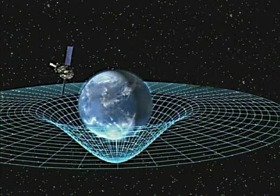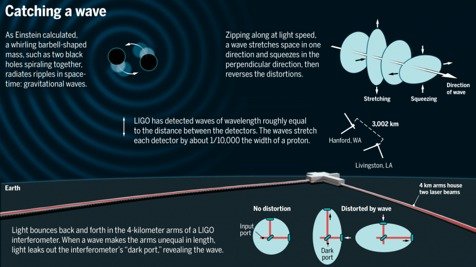Dark Patterns in Online Advertisements
Why in news?
- The Union Consumer Affairs Ministry is concerned about the increasing dark patterns of misleading advertisements that use tactics like false urgency, confirm-shaming, forced action, subscription traps, and nagging.
| Online space in India has experienced an impressive growth in recent years, with the number of internet connections reaching 830 million in 2021. Moreover, India’s consumer digital economy is anticipated to hit the US$1 trillion mark by 2030, growing from US$537.5 billion in 2020. This is attributed to the strong adoption of online services like eCommerce and edtech in the country. |
What are Dark Patterns?
- Harry Brignull introduced the phrase ‘dark pattern’ in 2010 to characterise deceptive strategies used to trick clients.
- A dark pattern refers to a design or user interface technique that is intentionally crafted to manipulate or deceive users into making certain choices or taking specific actions that may not be in their best interest. It is a deceptive practice employed to influence user behaviour in a way that benefits the company implementing it.
- These deceptive practices can include creating a false sense of urgency, making people feel bad for not doing something, forcing them to take certain actions, trapping them into subscriptions, or constantly bothering them.
What are the different types of Dark Patterns?
- Urgency: This tactic creates a sense of urgency or scarcity to pressure consumers into making a purchase or taking an action.
- Basket Sneaking: Websites or apps use dark patterns to add additional products or services to the shopping cart without user consent.
- Confirm Shaming: It involves guilt as a way to make consumers adhere. It criticizes or attack consumers for not conforming to a particular belief or viewpoint.
- Forced Action: This involves forcing consumers into taking an action they may not want to take, such as signing up for a service in order to access content.
- Nagging: It refers to persistent, repetitive and annoyingly constant criticism, complaints, requests for action.
- Subscription Traps: This tactic makes it easy for consumers to sign up for a service but difficult for them to cancel it, often by hiding the cancellation option or requiring multiple steps.
- Interface Interference: This tactic involves making it difficult for consumers to take certain actions, such as canceling a subscription or deleting an account.
- Bait and Switch: This involves advertising one product or service but delivering another, often of lower quality.
- Hidden Costs: This tactic involves hiding additional costs from consumers until they are already committed to making a purchase.
- Disguised Ads: Disguised ads are advertisements that are designed to look like other types of content, such as news articles or user-generated content.
How might users be negatively affected by dark patterns?
- Lack of Transparency: Dark patterns can obscure important information, making it difficult for users to fully understand the implications of their actions. This can lead to uninformed decision-making and potential financial or privacy risks.
- Impair user autonomy: It manipulates user behaviour, limiting their freedom of choice. Users may feel coerced or pressured into making decisions they wouldn’t have otherwise made, leading to buyer’s remorse or dissatisfaction.
- Concerns related to Privacy: Some dark patterns may manipulate users into sharing more personal data than they intended or agreeing to privacy settings that compromise their confidentiality. This can have implications for data security and expose users to potential privacy breaches.
- Erode trust in brands and advertising: Dark patterns often create frustrating and confusing experiences for users. They may feel deceived or manipulated, leading to a loss of trust in the platform or brand and a diminished overall user experience.
Are dark patterns illegal?
- The legality of dark patterns is a complex matter as distinguishing between manipulation and fraudulent intent can be challenging. As of now, there are no specific regulations in place in most nations against dark patterns.
- However, individuals who have experienced harm as a result of dark patterns may potentially seek compensation for damages. In 2022, Google and Facebook faced repercussions due to their cookie banners. These companies violated EU and French regulations by making it more difficult for users to reject cookies as compared to accepting them.
Regulatory measures in India:
- The Advertising Standards Council of India (ASCI), has been addressing issues of misleading ads through its existing code. The ASCI code applies across media, including online advertising (including companies’ own websites, pages and handles).
- Deceptive patterns that manipulate consumer choice and impede their right to be well informed constitute unfair practices that are prohibited under the Consumer Protection Act 2019.
What needs to be done?
- Prohibiting specific types of dark patterns.
- Industry self-regulation can play a pivotal role in addressing the issue. Online platforms can establish ethical design guidelines that discourage the use of dark patterns.
- Fostering consumer-friendly digital choice architecture and empowering regulators.
- Encouraging responsible design practices and conducting independent audits can help to identify and rectify dark pattern issues.
- Equipping users with tools and resources that allow them to make informed choices online. This could include browser extensions, apps or plugins that detect and block dark patterns or platforms providing clearer and more accessible settings and privacy options.
- In addition to promoting awareness about dark patterns among consumers, small and medium scale MSME merchants must also be made aware as they account for a huge portion of online sellers.
- Users should be encouraged to report instances of dark patterns they encounter and platforms should establish clear channels for users to provide feedback and report manipulative practices.
Conclusion:
The digital space has become an integral part of the consumer’s life, significantly influencing how they consume information, goods and services. Consumers must not be forced or directed towards unintended consequences without their express consent and consent by deceit is not an express consent. Consumers shall be aware what they are signing up and also should be able to get out of the same.’
Gravitational Waves

Why in News?
- Recently, scientists said that they have found evidence to suggest that the universe is replete with low-frequency gravitational waves – ripples in the fabric of space-time that are created by huge objects moving around, colliding, and merging with each other, and predicted by Albert Einstein’s General Theory of Relativity more than 100 years ago.
What are Gravitational Waves?
- A gravitational wave is an invisible (yet incredibly fast) ripple in space. Gravitational waves travel at the speed of light (186,000 miles per second). These waves squeeze and stretch anything in their path as they pass by.
- Einstein predicted that something special happens when two bodies—such as planets or stars—orbit each other. He believed that this kind of movement could cause ripples in space. These ripples would spread out like the ripples in a pond when a stone is tossed in. Scientists call these ripples of space gravitational waves.
| Einstein in his General Theory of Relativity showed that massive accelerating objects (things like neutron stars or black holes orbiting each other) would disrupt space-time in such a way that ‘waves’ of undulating space-time would propagate in all directions away from the source. These cosmic ripples would travel at the speed of light, carrying with them information about their origins, as well as clues to the nature of gravity itself. |
What causes gravitational waves?
- The most powerful gravitational waves are created when objects move at very high speeds. Some examples of events that could cause a gravitational wave are:
- when a star explodes asymmetrically (called a supernova)
- when two big stars orbit each other
- when two black holes orbit each other and merge
- But these types of objects that create gravitational waves are far away. And sometimes, these events only cause small, weak gravitational waves. The waves are then very weak by the time they reach Earth. This makes gravitational waves hard to detect.
How do we know that gravitational waves exist?
- In 2015, scientists detected gravitational waves for the very first time. They used a very sensitive instrument called LIGO (Laser Interferometer Gravitational-Wave Observatory). These first gravitational waves happened when two black holes crashed into one another. The collision happened 1.3 billion years ago. But the ripples didn’t make it to Earth until 2015.

Why is the Detection of Gravitational Waves Important?
- The electromagnetic waves (of which visible light is also a part) very often carry information that is characteristic of the objects they are emitted by.
- However, ~95% of the universe is known to consist of dark matter and dark energy, which don’t emit any light or any other electromagnetic waves.
- Hence, most of the cosmos remains ‘invisible’ to astrophysicists and astronomers.
- This changed with the detection of the gravitational waves, which can tell about origin and answer fundamental questions about outer space, such as how different galaxies have emerged and evolved over the entire course of the universe.
How were Low-frequency Gravitational Waves Detected?
- Like a whole spectrum of electromagnetic waves, from microwaves to radio waves, there is a wide range of gravitational waves of different wavelengths, frequencies and energies.
- The gravitational wave that was detected in 2015, and all subsequent detections after that, involved mergers of black holes that were relatively small in size. The gravitational waves produced by them are relatively feeble.
- Only the waves produced just ahead of the merger, when the energy released was maximum, could be detected. These are like flashes of gravitational waves, lasting for maybe a few milliseconds
- In a bid to discover low-frequency gravitational waves, scientists used an entirely different technology.
- The researchers used six large radio telescopes around the world (including the one in Pune) to study objects called pulsars – distant rapidly-rotating neutron stars that emit pulses of radiation, observed from the Earth as bright flashes of light.
- These bursts take place at extremely precise intervals, and therefore scientists use pulsars as ‘cosmic clocks’.
- Some of the signals from these neutron stars arrived a little early while a few others were late, the discrepancies ranging in millionths of seconds.
